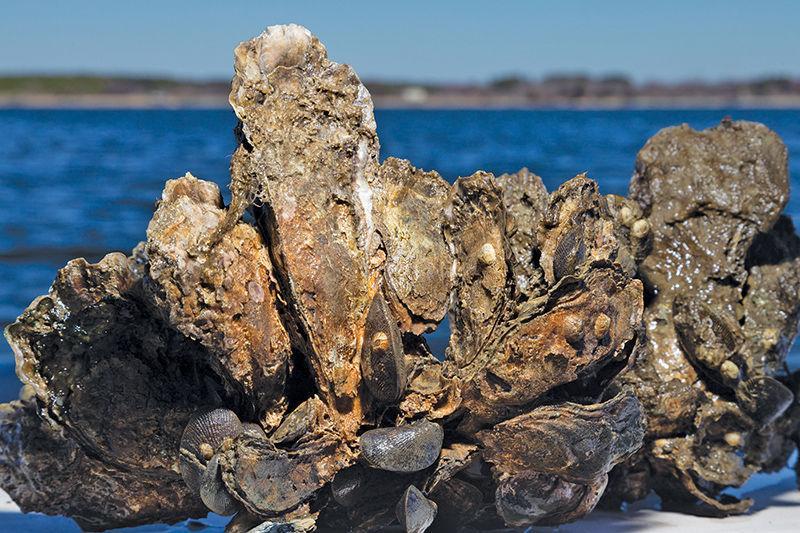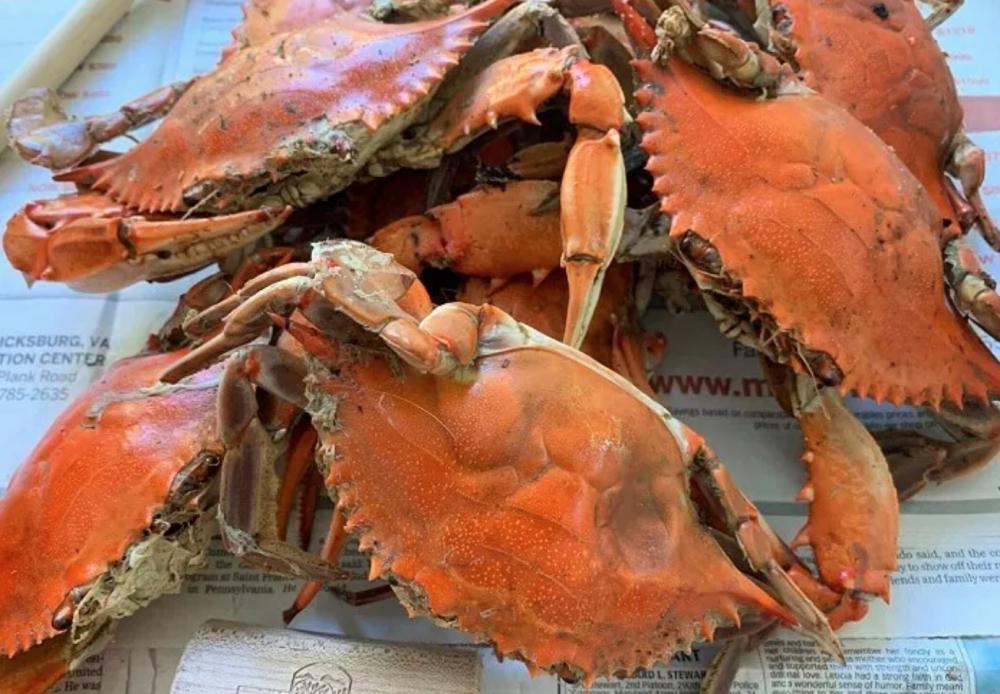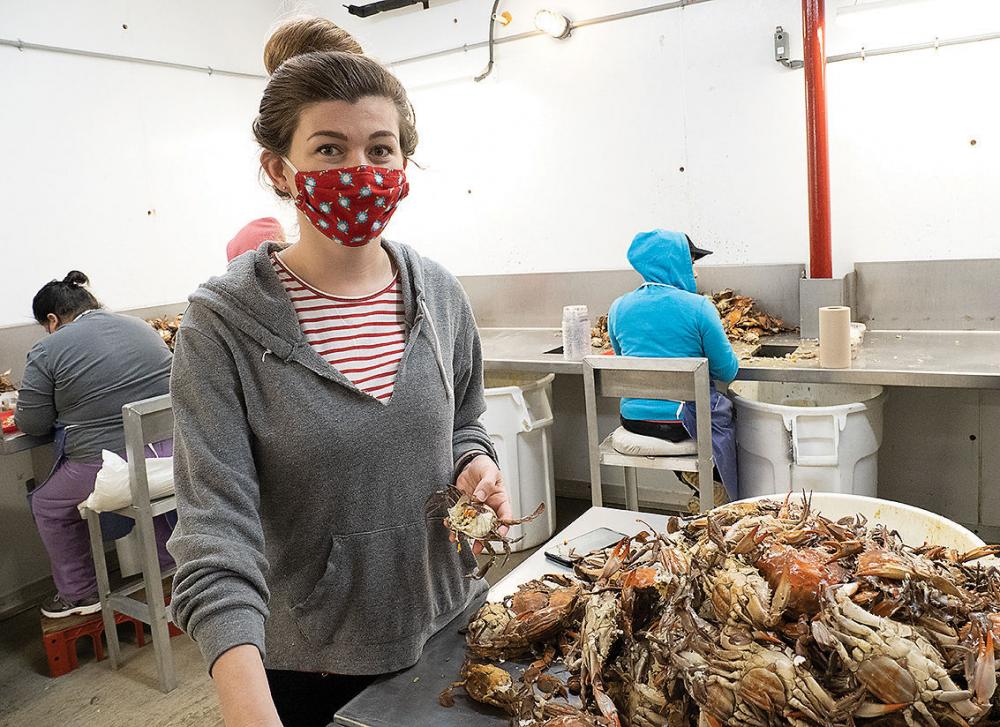Amid indications that Maryland’s oyster population is on the rebound, state fisheries managers are easing some harvest limits they had imposed two years ago.
The Department of Natural Resources announced July 1 that it would permit commercial oystering Monday through Friday, ending the Wednesday harvesting ban.
The DNR also has proposed reopening most areas north of the Bay Bridge to harvesting in the upcoming season, which runs Oct. 1 through March 31, 2022. Only the Chester River would remain off-limits under the proposal, which is expected to be finalized in July.
Watermen welcomed the decision, though they had pressed for even more easing of the limits. The Chesapeake Bay Foundation, though, called the announcement “a missed opportunity” that could undercut the recovery of the Bay’s oyster population.
Oysters are a keystone species in the Bay. They filter the water and provide habitat for other fish and aquatic creatures with the reefs they build of their shells. But overharvesting, habitat loss and disease have devastated the population, reducing it to an estimated 1–2% of historic levels.
They are also a pillar — though much diminished — of the Bay’s seafood industry and traditional fishing culture. The tension between their ecological and economic importance has led to conflict, especially in Maryland, where watermen and environmentalists have feuded over regulating harvests, creating harvest-free sanctuaries and spending large sums of state and federal funds to restore reef habitat.
In Maryland, watermen had pressed for lifting harvest restrictions in the wake of the DNR’s updated assessment of the state’s oyster population, released in June. It found that the number of legally harvestable oysters this year had increased to around 500 million, the third largest number in the last two decades.
The rebound was most pronounced in the Choptank River and Tangier Sound, where abundance hit 20-year highs. In other areas, the number of harvestable oysters remained the lowest in two decades.
But the update also found that a record number of juvenile oysters, or spat, had been produced last year.
Chris Judy, the DNR’s shellfish program manager, said the stock assessment showed the oyster population was “trending in the right direction.”
“Granted, spat need to grow,” he said, “but this, along with market abundance, is a notable positive result.” Spat generally take about three years to reach legally harvestable size.
The update marks a turnaround from the results of the DNR’s 2018 stock assessment, which estimated that the state’s population of market-size oysters had declined by half since 1999. The assessment also determined that oysters were being overharvested in more than half of the areas open to commercial harvest.
In response to the 2018 assessment, the DNR clamped down, banning oystering on Wednesdays and reducing the maximum catch on other days. The agency also closed most areas north of the Bay Bridge to preserve the remaining low numbers of market-size oysters there.
Oyster populations in Virginia’s portion of the Bay also are trending up in most places, according to Andrew Button, head of conservation and replenishment for the state’s Marine Resources Commission. Surveys there show oysters of all sizes at or near 20-year-plus highs, he said.
The Virginia Marine Resources Commission is expected to announce its rules for the 2021–22 oyster season in August.
The harvest rules the Maryland DNR announced July 1 are unchanged from what it had proposed in early June.
Over the last two seasons, watermen had chafed over the Wednesday harvest ban. Being limited to four days had prompted some to go out in foul weather, they said, risking their boats and personal safety.
Most watermen say the DNR should also increase daily harvest limits, arguing that there’s no reason to keep the brakes on under such improved conditions.
State fisheries managers left those limits unchanged. Watermen who dive for oysters or pluck them from the bottom with hand tongs or patent tongs would be allowed to bring back 12 bushels per person per day, compared with 15 bushels before. Those who use power dredges would be limited to 10 bushels per person or 20 per boat with a helper, down 20% from what they had been.
Despite the restrictions, watermen landed 330,000 bushels of oysters in the most recent season, a 20% increase over the previous season and more than twice the number landed in 2018‑19, before harvest limits were imposed.
Watermen contend that the growth in the oyster population, even as landings increased, shows that the limits are no longer needed.
“We’re seeing an increase over time,” Jeff Harrison, president of the Talbot Watermen Association, said at a June 8 meeting of the DNR’s Oyster Advisory Commission. “We have a great spat set, so we know in the future we’re going to have oysters.”
But the Bay Foundation, which had opposed easing harvest restrictions, warned that the DNR decision could backfire.
“The stock assessment continues to show overharvesting happening in several areas of the Bay, which these regulations fail to address,” the foundation said in a statement. “In fact, this action opens the door for more harvest, which puts any chance of this year’s record spat set contributing to the long-term recovery of oysters at significant risk.”
While the assessment found fewer areas of the Bay being overfished, it found continued overharvesting in the Choptank and in Tangier Sound, the two areas with the most plentiful oysters.
The Bay Foundation urged the DNR to rethink the way it manages the oyster fishery, arguing that the increased harvest of the past two years shows that the methods for limiting harvest pressure aren’t working.
The foundation said that fishery managers should require watermen to report their harvest online, as Virginia will begin doing this fall. It also said the DNR should switch to setting a total allowable catch for each area. That way, managers could monitor the harvest more closely and close it promptly in areas where the cap has been reached.
The DNR’s Judy said the state plans to begin a trial of online harvest reporting this fall.
Allison Colden, the foundation’s Maryland fisheries scientist, said the DNR needs to look for better ways to regulate the size of the fishery, which has grown dramatically. The number of watermen who paid the required fee to harvest oysters commercially increased from 822 in 2018 to 1,239 last fall, the most in two decades.
It’s a “sensitive issue” and one that needs to be discussed, Colden said, because oystering is an integral part of the traditional fishing culture in the Bay’s rural communities.
“But it’s obviously something that I don’t think the current regulations have a handle on,” she said. “I think we at least need to have leadership from the department in having that conversation.”
By Timothy B. Wheeler




